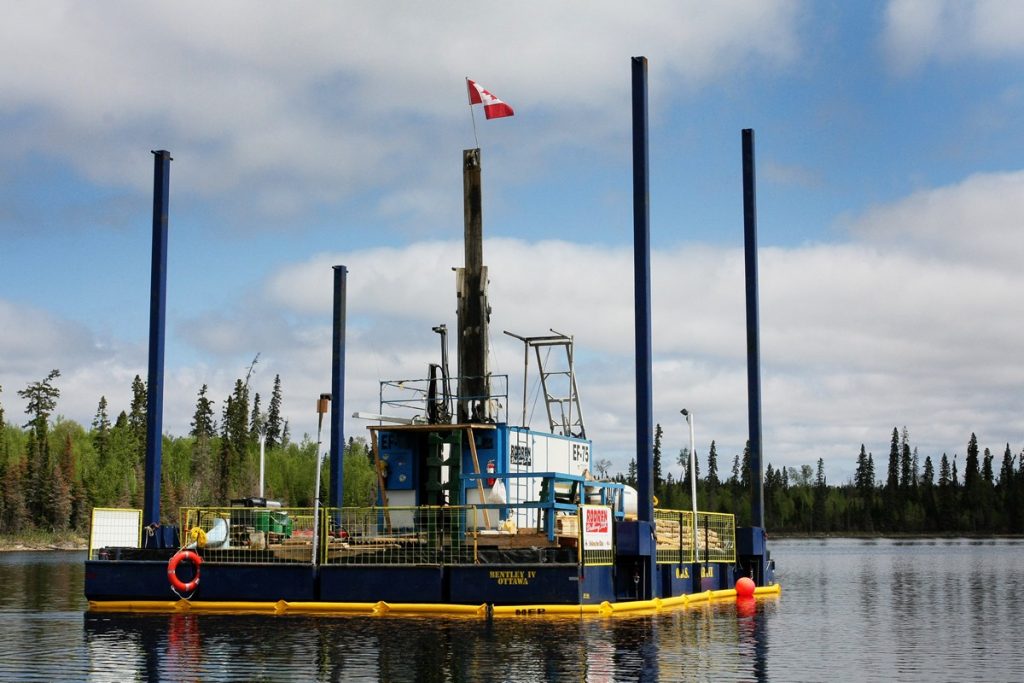First Mining PFS outlines 11-year, US$718M gold mine at Springpole


First Mining Gold has released the results of a prefeasibility study on an 11-year, 30,000 t/d open pit operation at its Springpole gold project in northwestern Ontario.
The study suggests nine years of primary mining and processing, followed by just over two years of processing lower-grade stockpiles. Over the 11-year mine life, average annual gold production is forecast at 287,000 oz. (335,000 oz. in the first nine years) at all-in sustaining costs of US$645 per oz. (US$577 per oz. in the first nine years).
With an initial capital cost estimate of US$718 million, the after-tax net present value estimate for this project comes in at US$995 million, at a 5% discount rate and based on a gold price of US$1,600 per oz., with a 29.4% internal rate of return.
Along with the prefeasibility, First Mining has declared an initial reserve for Springpole. Probable reserves stand at 121.6 million tonnes grading 0.97 g/t gold and 5.23 g/t silver, for a total of 3.8 million gold oz. and 20.5 million oz. of silver.
“This PFS is an important milestone for the company as we continue to advance and de-risk the Springpole gold project,” Dan Wilton, CEO of First Mining, said in a release. “The results of the PFS confirm that Springpole has the potential to become a strategically significant, highly profitable gold mine in one of the most attractive mining jurisdictions in North America.”
Wilton added that First Mining recently added Steve Lines to its team, Lines has experience with permitting several Canadian open pit projects that would require in-lake cofferdams and dewatering. The Springpole deposits sits underneath a portion of the northern bay of Springpole Lake – two dewatering dykes, over a total length of 940 metres, would need to be built to dewater this part of the bay. The total area to be potentially dammed and dewatered covers approximately 1.5 sq. km and represents approximately 6% of the surface area of Springpole Lake, and 3% of its volume.
In terms of project development, the site also requires an access road (which the study assumes would be completed before the start of construction) and a new power transmission line. The latter would likely need to connect to the provincial line, 75 km to the southeast.
On the permitting front, First Mining is advancing Springpole through the provincial and federal environmental assessment (EA) processes. The company is working to prepare an EA document that meets both levels of requirements – this includes the federal environmental impact statement (EIS) guidelines and the provincial EA terms of reference.
Looking at the latest study, the company has identified upside opportunities to the current project economics. These include potential for upgrades to the existing resources from infill drilling, mine plan and process optimization and additional geotechnical studies. There are further geophysical targets around the resource.
Indicated resources (which include the probable reserve) total 151 million tonnes at 0.94 g/t gold and 5 g/t silver with additional inferred resources of 16 million tonnes grading 0.54 g/t gold and 2.8 g/t silver.
This year, First Mining plans to start a 10,000-metre diamond drill program at Springpole.
The project is 110 km northeast of Red Lake.
For more information, visit www.FirstMiningGold.com.
Comments
Brian Buss
I have worked in the mining sector as an engineer and project manager for most of my 35 year career. I find these types of results preposterous. There is no hope that this project can be built for the Capital estimate presented.
Given the size, location, and the work required to prepare the mine and the complexity of the processing flowsheet, I would expect this project to come in at ~$1.4 B Canadian. One only needs to benchmark Detour Lake, Cote Gold, Rainy River, and Canadian Malarctic. The market clearly understands this as the stock price did not move after this announcement. No one in the industry believes these numbers. I call out the engineering firms to stop issuing unrealistic estimates in these studies. It’s an affront to the profession and a diservice to the investors. This is exactly what reg 43-101 was supposed to stop. I look forward to auditting the full report.